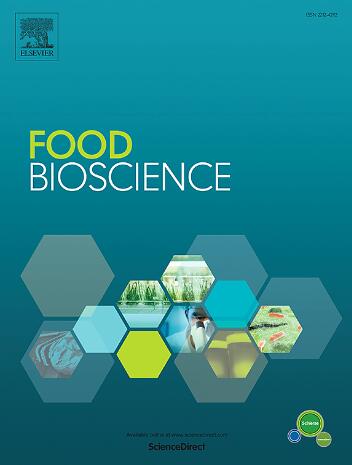Advances in 3D scaffold materials and fabrication techniques for cultured meat production: A review
IF 5.9
1区 农林科学
Q1 FOOD SCIENCE & TECHNOLOGY
引用次数: 0
Abstract
Cultured meat has emerged as a transformative solution to the environmental, ethical, and scalability challenges associated with conventional livestock farming. However, its successful integration requires the development of scaffold materials equivalent to the functions and senses of traditional meat products. This article evaluates advancements in non-animal-derived smart scaffolds, which leverage materials such as polysaccharides, plant proteins, yeast derivatives, and amyloid fibrils. These innovative materials effectively emulate the architecture of the extracellular matrix while incorporating dynamic functionalities, including flavor release and nutrient fortification. Moreover, it explores innovative scaffold fabrication technologies, including 3D bioprinting, directional freeze-drying, and electrospinning of nanofiber networks. These approaches facilitate the creation of spatially controlled microenvironments that effectively guide cellular alignment and promote tissue maturation. The textural properties of cultured meat can be further enhanced through crosslinking strategies, which allow for adjustments in mechanical strength and the degree of crosslinking in the scaffold. Additionally, the introduction of flavor compounds and nutrients into the scaffold can significantly improve the sensory and nutritional qualities of the cultured meat. In the future, cultured meat has considerable potential to become an important alternative to meet the global demand for meat, provided that current affordability and scalability hurdles can be overcome. Future research should focus on optimizing scaffold material formulations and fabrication methodologies to address cost-efficiency and production scalability challenges, thereby advancing the translational development of cultured meat technologies toward industrial commercialization.
用于培养肉生产的3D支架材料和制造技术进展综述
人造肉已经成为解决与传统畜牧业相关的环境、伦理和可扩展性挑战的变革性解决方案。然而,它的成功融合需要开发相当于传统肉制品功能和感官的支架材料。本文评估了非动物来源的智能支架的进展,该支架利用诸如多糖、植物蛋白、酵母衍生物和淀粉样原纤维等材料。这些创新材料有效地模拟了细胞外基质的结构,同时结合了动态功能,包括风味释放和营养强化。此外,它还探索了创新的支架制造技术,包括3D生物打印、定向冷冻干燥和纳米纤维网络的静电纺丝。这些方法有助于创建空间控制的微环境,有效地引导细胞排列和促进组织成熟。通过交联策略可以进一步增强培养肉的结构特性,这允许在支架中调整机械强度和交联程度。此外,在支架中加入风味化合物和营养物质可以显著改善培养肉的感官和营养品质。在未来,只要能够克服目前的可负担性和可扩展性障碍,培养肉有很大的潜力成为满足全球肉类需求的重要替代品。未来的研究应侧重于优化支架材料配方和制造方法,以解决成本效益和生产可扩展性的挑战,从而推动培养肉技术向工业商业化的转化发展。
本文章由计算机程序翻译,如有差异,请以英文原文为准。
求助全文
约1分钟内获得全文
求助全文
来源期刊

Food Bioscience
Biochemistry, Genetics and Molecular Biology-Biochemistry
CiteScore
6.40
自引率
5.80%
发文量
671
审稿时长
27 days
期刊介绍:
Food Bioscience is a peer-reviewed journal that aims to provide a forum for recent developments in the field of bio-related food research. The journal focuses on both fundamental and applied research worldwide, with special attention to ethnic and cultural aspects of food bioresearch.
 求助内容:
求助内容: 应助结果提醒方式:
应助结果提醒方式:


